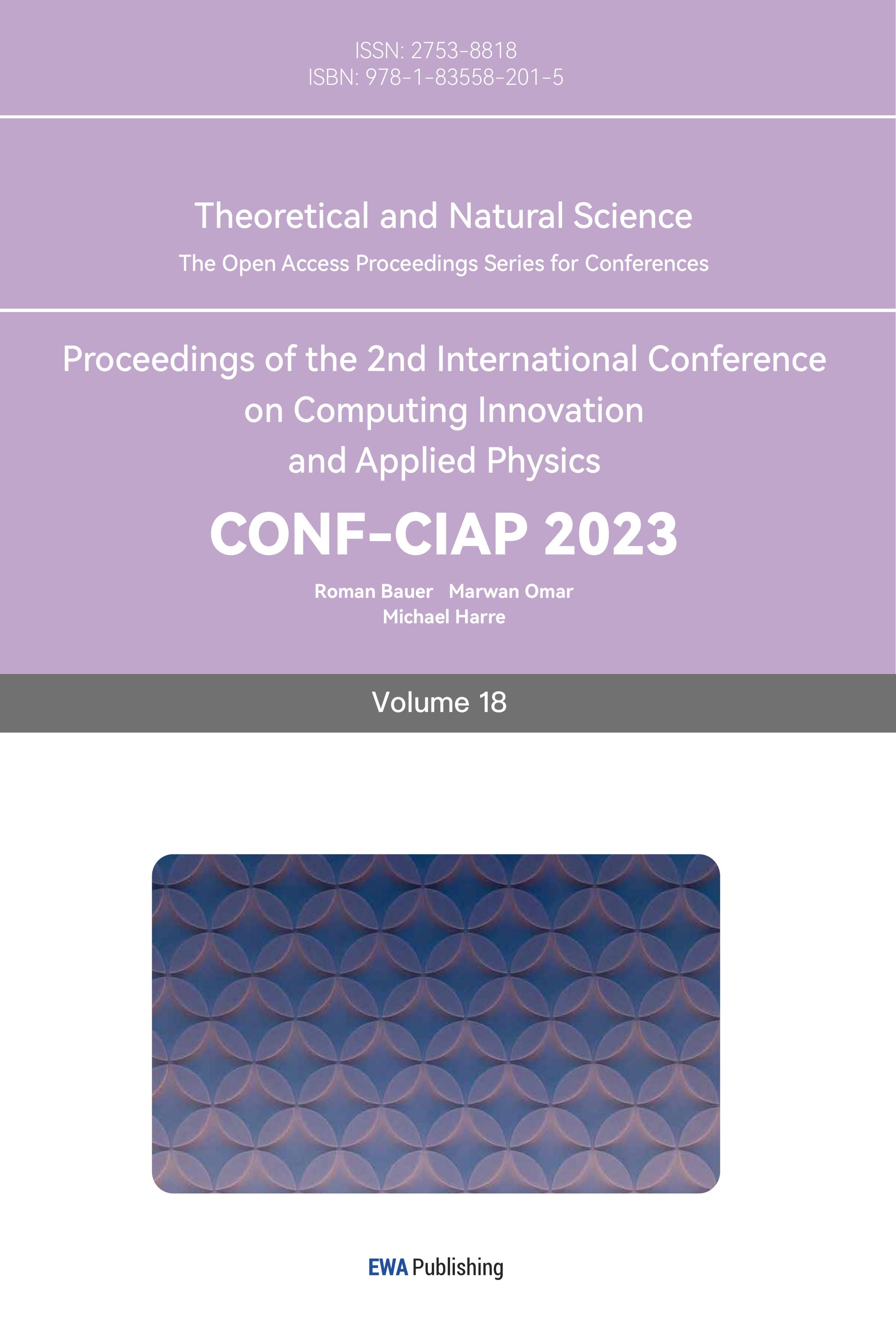References
[1]. Sundar, P. S., Chowdhury, C., & Kamarthi, S. (2021). Evaluation of Human Ear Anatomy and Functionality by Axiomatic Design. Biomimetics, 6(2), 31.
[2]. Srikanth, B., Gowrisankar, M., Raveendra, M., & Ramachandran, D. (2019). Thermal analysis of molecular interactions in binary mixtures of propipohenone with isomeric cresols at various temperatures through thermophysical properties. Physics and Chemistry of Liquids, 59(2), 249–263.
[3]. Naoe, T., Kogawa, H., Wakui, T., Teshigawara, M., Haga, K., & Futakawa, M. (2020). Pressure wave induced sound measurement for diagnosing the operation status of the J-PARC pulsed spallation neutron source. Nuclear Instruments and Methods in Physics Research Section A: Accelerators, Spectrometers, Detectors and Associated Equipment, 982, 164566.
[4]. Heywood, P. (2015). Metal Casts Showing the Three-Dimensional Structure of the Human Inner Ear Were Converted Into Jewelry. Otology &Amp; Neurotology, 36(5), 936–940.
[5]. Ambavane, P., Karjavkar, R., Pathare, H., Relekar, S., Alte, B., & Sharma, N. K. (2020). A Novel Communication System For Deaf And Dumb People using gesture. ITM Web of Conferences, 32, 02003.
[6]. Palm, B. G., Bayer, F. M., & Cintra, R. J. (2021). Signal detection and inference based on the beta binomial autoregressive moving average model. Digital Signal Processing, 109, 102911.
[7]. Challa, P., & Mosa, S. A. (2018). Performance evaluation and implementation of convolution coded OFDM modem in wireless underwater acoustic communication. International Journal of Communication Systems, 31(14), e3737.
[8]. Xie, R. (2016). Transmission of auditory sensory information decreases in rate and temporal precision at the endbulb of Held synapse during age-related hearing loss. Journal of Neurophysiology, 116(6), 2695–2705.
[9]. Xu, Y., Zhou, L. & Xiao, Z., (2011). Response properties of cochlear nucleus neurons: a digital model-based study. Journal of Southern Medical University, 31(1), 77.
[10]. Zeitler, D. M., & Holcomb, M. (2021). 5 Common Myths of Cochlear Implants. The Hearing Journal, 74(10), 32,33.
Cite this article
Guo,B. (2023). Identification and processing of in-ear acoustic signals. Theoretical and Natural Science,18,275-280.
Data availability
The datasets used and/or analyzed during the current study will be available from the authors upon reasonable request.
Disclaimer/Publisher's Note
The statements, opinions and data contained in all publications are solely those of the individual author(s) and contributor(s) and not of EWA Publishing and/or the editor(s). EWA Publishing and/or the editor(s) disclaim responsibility for any injury to people or property resulting from any ideas, methods, instructions or products referred to in the content.
About volume
Volume title: Proceedings of the 2nd International Conference on Computing Innovation and Applied Physics
© 2024 by the author(s). Licensee EWA Publishing, Oxford, UK. This article is an open access article distributed under the terms and
conditions of the Creative Commons Attribution (CC BY) license. Authors who
publish this series agree to the following terms:
1. Authors retain copyright and grant the series right of first publication with the work simultaneously licensed under a Creative Commons
Attribution License that allows others to share the work with an acknowledgment of the work's authorship and initial publication in this
series.
2. Authors are able to enter into separate, additional contractual arrangements for the non-exclusive distribution of the series's published
version of the work (e.g., post it to an institutional repository or publish it in a book), with an acknowledgment of its initial
publication in this series.
3. Authors are permitted and encouraged to post their work online (e.g., in institutional repositories or on their website) prior to and
during the submission process, as it can lead to productive exchanges, as well as earlier and greater citation of published work (See
Open access policy for details).
References
[1]. Sundar, P. S., Chowdhury, C., & Kamarthi, S. (2021). Evaluation of Human Ear Anatomy and Functionality by Axiomatic Design. Biomimetics, 6(2), 31.
[2]. Srikanth, B., Gowrisankar, M., Raveendra, M., & Ramachandran, D. (2019). Thermal analysis of molecular interactions in binary mixtures of propipohenone with isomeric cresols at various temperatures through thermophysical properties. Physics and Chemistry of Liquids, 59(2), 249–263.
[3]. Naoe, T., Kogawa, H., Wakui, T., Teshigawara, M., Haga, K., & Futakawa, M. (2020). Pressure wave induced sound measurement for diagnosing the operation status of the J-PARC pulsed spallation neutron source. Nuclear Instruments and Methods in Physics Research Section A: Accelerators, Spectrometers, Detectors and Associated Equipment, 982, 164566.
[4]. Heywood, P. (2015). Metal Casts Showing the Three-Dimensional Structure of the Human Inner Ear Were Converted Into Jewelry. Otology &Amp; Neurotology, 36(5), 936–940.
[5]. Ambavane, P., Karjavkar, R., Pathare, H., Relekar, S., Alte, B., & Sharma, N. K. (2020). A Novel Communication System For Deaf And Dumb People using gesture. ITM Web of Conferences, 32, 02003.
[6]. Palm, B. G., Bayer, F. M., & Cintra, R. J. (2021). Signal detection and inference based on the beta binomial autoregressive moving average model. Digital Signal Processing, 109, 102911.
[7]. Challa, P., & Mosa, S. A. (2018). Performance evaluation and implementation of convolution coded OFDM modem in wireless underwater acoustic communication. International Journal of Communication Systems, 31(14), e3737.
[8]. Xie, R. (2016). Transmission of auditory sensory information decreases in rate and temporal precision at the endbulb of Held synapse during age-related hearing loss. Journal of Neurophysiology, 116(6), 2695–2705.
[9]. Xu, Y., Zhou, L. & Xiao, Z., (2011). Response properties of cochlear nucleus neurons: a digital model-based study. Journal of Southern Medical University, 31(1), 77.
[10]. Zeitler, D. M., & Holcomb, M. (2021). 5 Common Myths of Cochlear Implants. The Hearing Journal, 74(10), 32,33.









